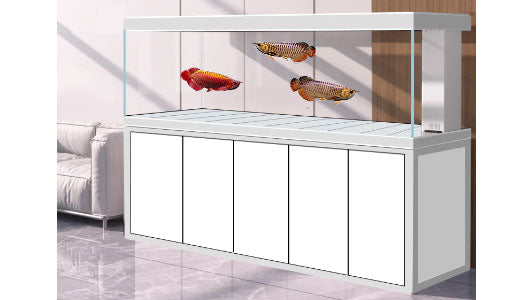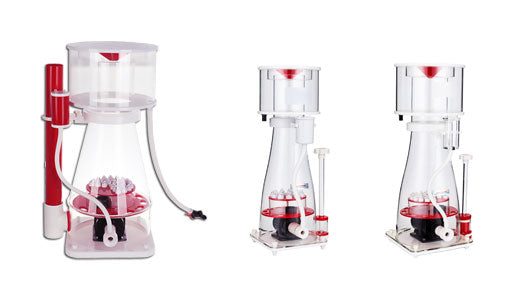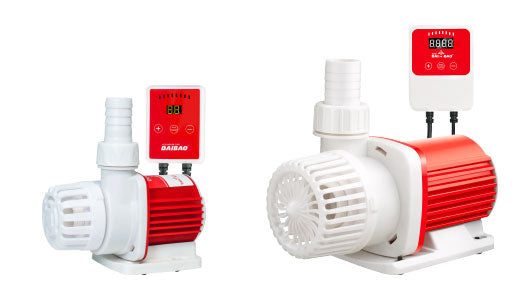
A Beginner's DIY Hydroponics System Guide
Are you eager to explore hydroponics or home-based cultivation but lack guidance on where to begin? Would you like to create your own system using recycled materials from your household? Embracing hydroponic gardening at home offers numerous advantages, such as a steady supply of fresh, nutritious produce, which eliminates the need for frequent trips to the supermarket.
There are many kinds of hydroponic systems, but in this article, we’ll focus on one of the most straightforward ones to understand. We’re going to explain what a Deep Water Culture hydroponic system is and provide a quick and easy guide to building one for yourself.
The simplest hydroponic system that you can construct and manage at home is a Deep Water Culture (DWC). In this system, plants thrive by submerging their roots directly into water that is infused with essential nutrients. For home-based growers, this can be accomplished by utilizing large opaque storage containers or buckets. On the other end of the hydroponics spectrum, commercial growers employ rafts that float atop a large bed of water, resembling a conveyor belt where young plants are introduced on one end and progress towards harvest readiness at the other end.

DWC systems are comparatively simple and cost-effective to construct due to the absence of moving parts or water recirculation. In DWC systems, the water remains sitting in the reservoir throughout the plant's lifespan. This means the water must be aerated to replenish the oxygen consumed by the roots.
In traditional soil cultivation, oxygen is supplied to the roots through air pore spaces, while recirculating hydroponic systems aerate the water as it circulates. To address this in a DWC system, an air pump equipped with an air stone (commonly used in fish tanks) is employed to maintain oxygen-rich water.
Which crops can be grown in a DWC system?
Ideal crops for DWC systems include lettuce, kale, chard, bok choy, basil, and parsley. These plants are not excessively top-heavy, as DWC systems have limited root anchorage. Growing tall plants like tomatoes can be challenging in DWC systems, requiring appropriate support to keep the plants upright.
How to make a DWC hydroponics system at home
Materials needed:
- Storage container or bucket
- Net pots
- Airpump with air stone
- Hard Water Liquid Nutrients (A & B)
- pH Down
- pH meter
- Measuring beaker
- Pipettes
- Hole saw with arbor
- Drill
Step 1: Find a suitable container for the system
It’s recommended to use deep storage containers and buckets as this is advantageous for these systems. This is because a greater depth of water in the reservoir leads to increased stability of the nutrient solution. Smaller reservoirs are more prone to fluctuations in nutrient concentration and pH, requiring more frequent water top-ups. Also ensure that your container is light proof, as allowing light to penetrate poses a significant risk of algae growth in the water.
Step 2: Drill holes into the lid of the container
The plants will be cultivated in net pots, ideally pots with numerous holes to allow for optimal root growth. The next step is to drill holes into the container lid where the net pots will be positioned. This task necessitates the use of a specialized tool, namely a hole saw, which is both affordable and easy to operate. It is crucial to select net pots that are larger than the drilled holes to prevent them from falling through.
In the case of a wider container, multiple holes can be drilled. Careful planning is essential in this stage: when deciding the spacing of your plants, you need to keep in mind how large they will end up growing. Alternatively, if using a 20-liter bucket, drilling a single hole in the center is recommended for a single plant system, which works well for cultivating larger crops such as tomatoes or courgettes.
Pro-Tip: To prevent the plastic from breaking and the saw from jolting, place a piece of wood beneath the lid while drilling the holes.


Step 3: Assemble your air pump
It is essential to keep the air pump positioned outside of the reservoir. The pump typically includes a check valve, which prevents water from being drawn back up when the pump is switched off. If the pump does not come with a check valve, it is important to keep the pump above the water level.
Connect the air stone and check valve using a length of tubing, ensuring that the arrow on the check valve is directed towards the air stone. Then, attach the check valve to the air pump using the same method of connection.
Step 4: Fill the reservoir, incorporate nutrients, and fine-tune the pH
Considering that the system can become quite heavy when filled, it’s important to figure out the container's placement before adding the components. Fill the container almost to the brim with water, leaving approximately 1-2cm of space at the top.
Next, introduce the hydroponic nutrients to the water, following the instructions provided on whatever nutrient bottle you purchased.
It is also essential to adjust the pH level of the water. Utilizing a pH meter, measure the current pH reading, keeping in mind that tap water typically falls within the range of 6.5-7.5 pH. Most vegetables and herbs thrive in a slightly acidic nutrient solution.
To bring the pH down to the optimal range of 5.5-6.5, add drops of phosphoric acid using a pipette (commercially sold as 'pH Down' for hydroponic applications). Exercise caution by wearing gloves while handling pH down and ensure thorough mixing of the solution after its application.
Step 5: Assemble the system
Connect the air pump to a power source and position the air stone inside the reservoir. Securely fasten the lid on top, bringing you closer to completion.
Introducing your plants is a straightforward process. You can simply place some plants that were grown in rockwool plugs into the net pots. Alternatively, you can use seedlings that have been cultivated in soil, but we recommend opting for a medium that minimizes mess. Rockwool plugs or hydroton clay pellets serve as cleaner alternatives.
How do I maintain a hydroponics system?
Maintaining an adequate water level is crucial, particularly during the early stages of plant growth. As long as the roots have sufficient contact with the water, they should thrive.
Monitor the pH levels regularly by checking it each time you add water to the system.
To precisely measure the amount of water added, I repurpose an old 2L water bottle. For every 2L of water, I incorporate 4ml of each A and B nutrient into the reservoir.
It is essential to clean the reservoir and replace the water with fresh supplies every 14-21 days.
Final Thoughts:
For newcomers venturing into hydroponics, the intricacy of certain systems can be daunting. Hence, we suggest starting with a simple approach, such as a DWC system, which provides beginners with an opportunity to ease into hydroponics. These systems are characterized by their low maintenance requirements and can be conveniently situated indoors or outdoors, as long as they receive adequate light.



 Aquariums & Supplies
Aquariums & Supplies


 Coral Reef Aquariums & Supplies
Coral Reef Aquariums & Supplies


 Garden & Hydroponics & Landscape
Garden & Hydroponics & Landscape


 Ponds & Fountains & Waterfalls
Ponds & Fountains & Waterfalls


 Drum Pond Filter
Drum Pond Filter



 Community
Community



 Help Center
Help Center
